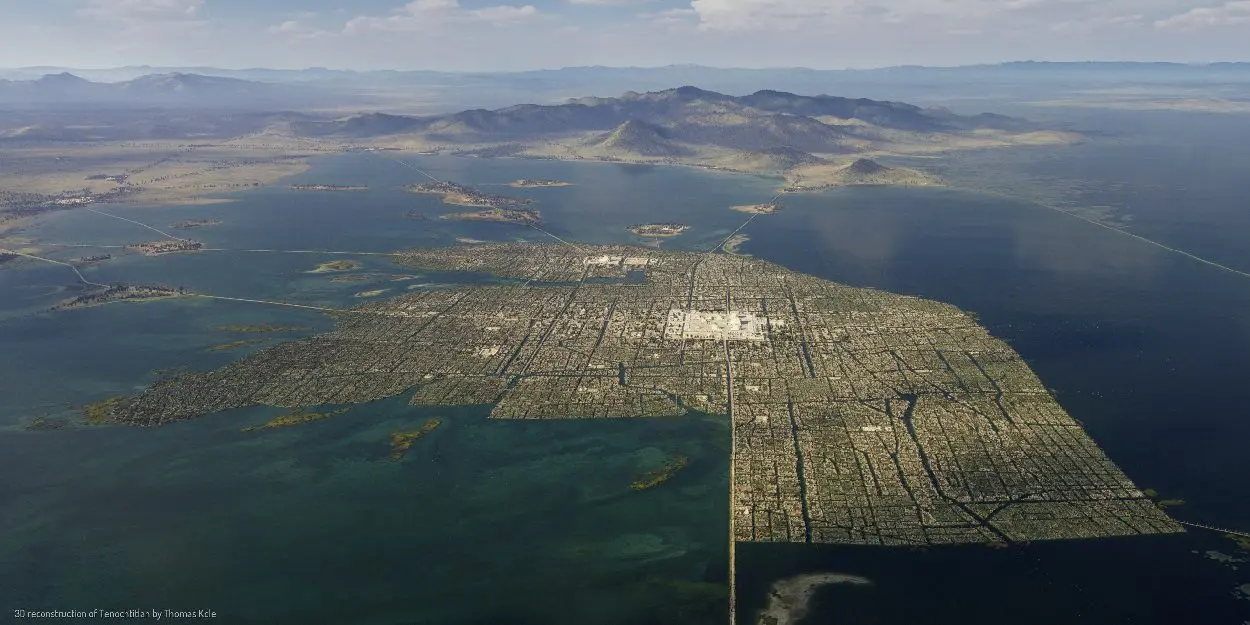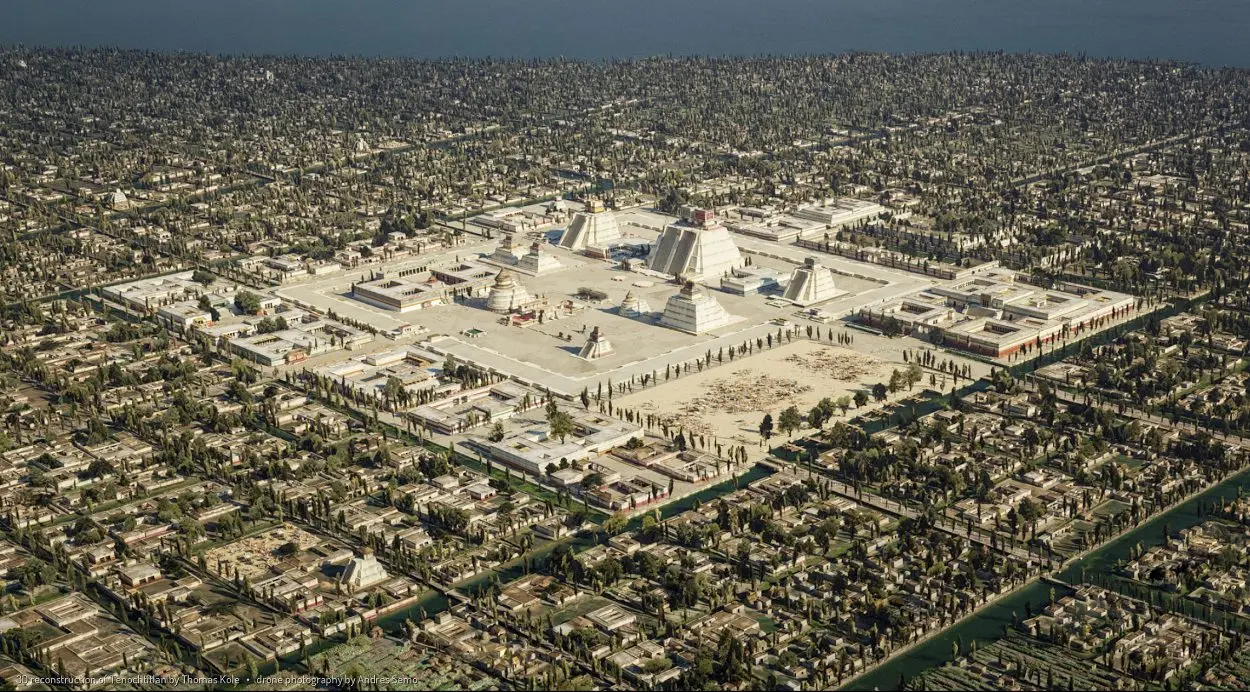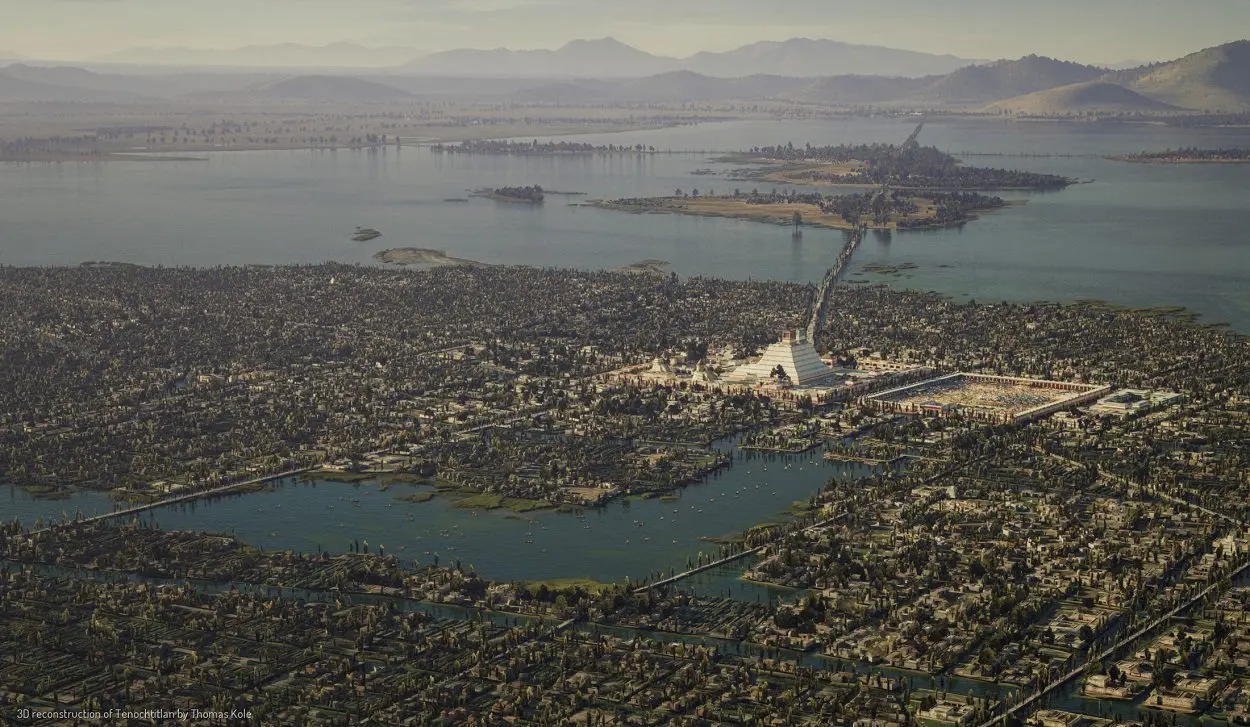An artistic project by Thomas Kole, a Dutch born Technical Artist, has published a detailed recreation of the Aztec capital of Tenochtitlan.
The project, called “A portrait of Tenochtitlan, a 3D reconstruction of the capital of the Aztec Empire”, is the result of 1.5 years of study, in which a team of specialists have used open-source software such as Blender, Gimp, and Darktable, to bring Tenochtitlan back to life how it looked in AD 1518.
“Not much is left of the old Aztec – or Mexica – capital Tenochtitlan. What did this city, raised from the lake bed by hand look like? Using historical and archaeological sources, and the expertise of many, I have tried to faithfully bring this iconic city to life,” said Kole.
Tenochtitlan was situated on a raised islet in the western side of Lake Texcoco, which is now the historic part of present-day Mexico City.

The altepetl (city) was founded by the Mexica, a Nahuatl-speaking indigenous people of the Valley of Mexico, who entered the Basin of Mexico after the decline of the Toltec civilisation. The Mexica transformed the islet using the chinampa system, creating rectangular areas of fertile arable land to grow crops on the shallow lake beds.
The settlement experienced rapid growth, evolving into a formidable city-state and becoming an integral part of the Triple Alliance alongside Texcoco and Tlacopan.
Over time, Tenochtitlan asserted its dominance, effectively becoming the rulers of the alliance. They expanded their influence by conquering neighbouring city-states, and establishing an empire largely sustained by an imperial tribute system.

Tenochtitlan was meticulously planned with a symmetrical layout, encompassing four distinct zones that covered an expanse of 3,212 acres. Each zone was subdivided into 20 calpulli (districts), interconnected by a network of tlaxilcalli (streets) leading to extensive causeways connecting to the mainland.
Within each calpulli, a central tiyanquiztli (marketplace) was situated, accompanied by various residences and workshops for artisans such as weavers, sculptors, and potters. At the centre was a large ceremonial complex containing public buildings, temples, and palaces.
“Large buildings stand out against the single-story houses, from the massive twin-temple pyramids in the centre, to the smaller temples and shrines in neighborhood community centres. The Sacred Precinct, with the Templo Mayor, forms the epicenter of the city. Next to it is the palace of Emperor Motecuhzoma Xocoyotzin, among various other temples, schools, gardens, and a zoo,” said Kole.

Upon the arrival of the Spanish conquistadors in the year 1519, Tenochtitlan had reached its zenith, boasting an estimated population ranging from 200,000 to 400,000 residents.
The inhabitants were swiftly exposed to diseases for which they had no natural immunity. This devastating outbreak led to a significant population decline, with estimates indicating that over 50% of the region’s people fell victim to smallpox.
The Spanish conquistadors, supported by a coalition of indigenous tribes and formerly tribute-paying city-states, besieged Tenochtitlan for a period of 93 days. Ultimately, on August 13, AD 1521, the Mexica surrendered, heralding the onset of Spanish dominance in central Mexico.
Visit “A portrait of Tenochtitlan” by Clicking Here
Header Image Credit : Thomas Kole – CC BY 4.0







